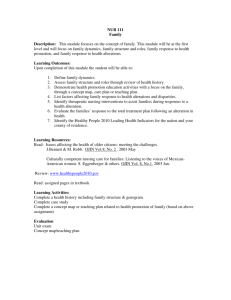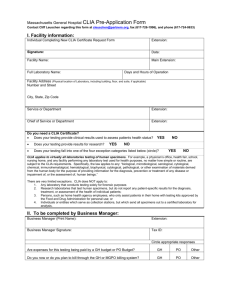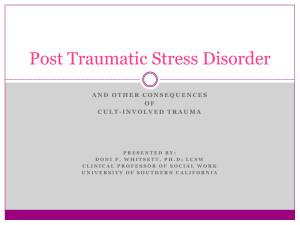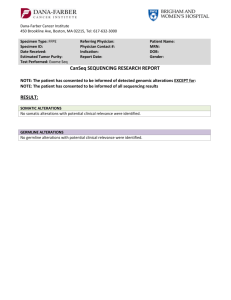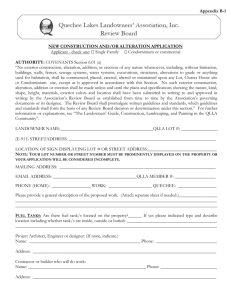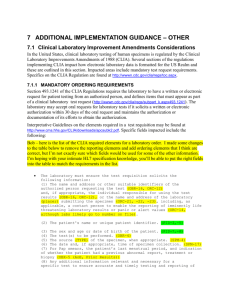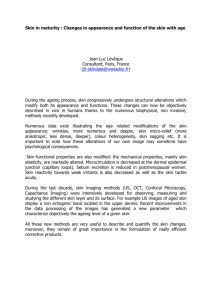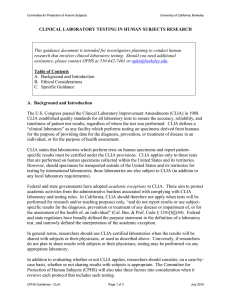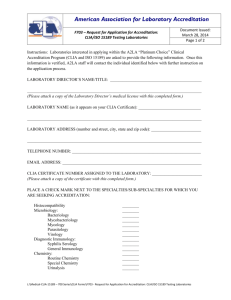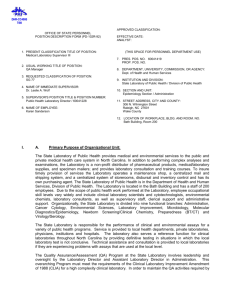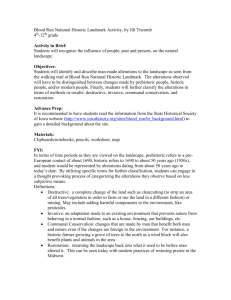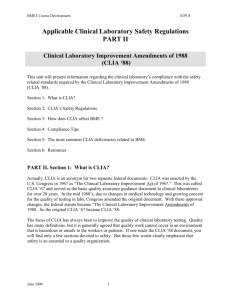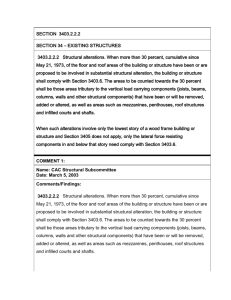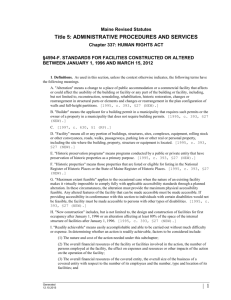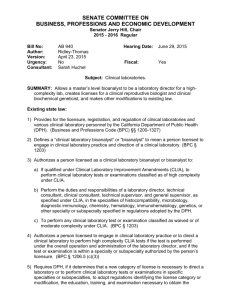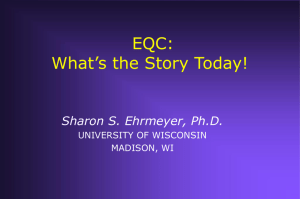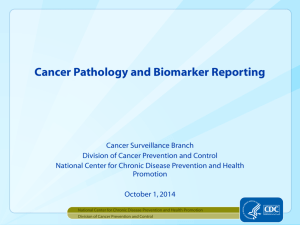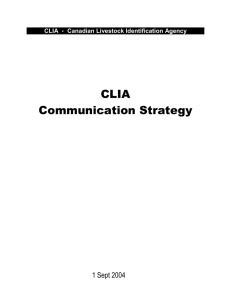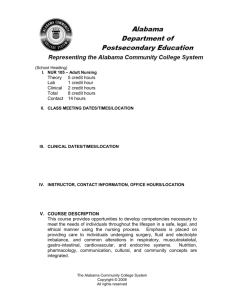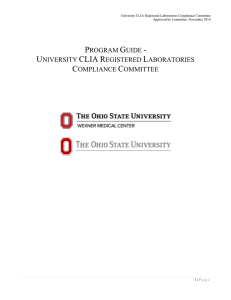Carrier Results Report Template
advertisement
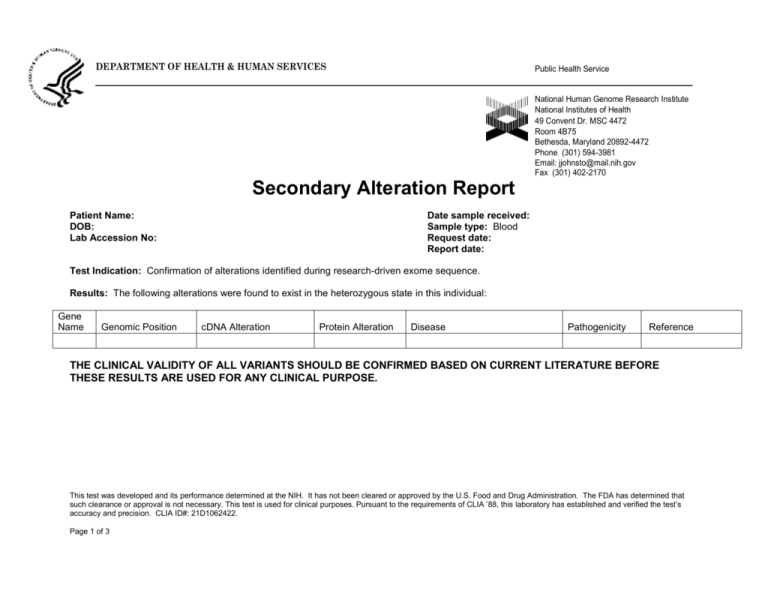
DEPARTMENT OF HEALTH & HUMAN SERVICES Public Health ServiceA National Human Genome Research Institute National Institutes of Health 49 Convent Dr. MSC 4472 Room 4B75 Bethesda, Maryland 20892-4472 Phone (301) 594-3981 Email: jjohnsto@mail.nih.gov Fax (301) 402-2170 Secondary Alteration Report Patient Name: DOB: Lab Accession No: Date sample received: Sample type: Blood Request date: Report date: Test Indication: Confirmation of alterations identified during research-driven exome sequence. Results: The following alterations were found to exist in the heterozygous state in this individual: Gene Name Genomic Position cDNA Alteration Protein Alteration Disease Pathogenicity Reference THE CLINICAL VALIDITY OF ALL VARIANTS SHOULD BE CONFIRMED BASED ON CURRENT LITERATURE BEFORE THESE RESULTS ARE USED FOR ANY CLINICAL PURPOSE. This test was developed and its performance determined at the NIH. It has not been cleared or approved by the U.S. Food and Drug Administration. The FDA has determined that such clearance or approval is not necessary. This test is used for clinical purposes. Pursuant to the requirements of CLIA ’88, this laboratory has established and verified the test’s accuracy and precision. CLIA ID#: 21D1062422. Page 1 of 3 Interpretation: The information provided in this report details the presence in this individual of alterations originally identified through research driven exome sequencing. Alterations in these genes are predicted to cause disease in the homozygous or compound heterozygous state. Other variants were not specifically tested for nor were they ruled out in this individual. This interpretation is based on data present in the Human Gene Mutation Database (HGMD). Any use of this information for clinical purposes needs to be preceded by a thorough reevaluation of the current literature. It is possible that some of these alterations are not causative and have been included in HGMD by error. Method: Research results were confirmed on a DNA sample isolated at the National Institutes of Health from whole blood. DNA was PCR amplified, followed by direct DNA sequencing with forward and reverse primers for each alteration noted in the above table. cDNA position numbers are based on the reference sequence noted in the table. All mutations are given as distances from the first nucleotide in the ATG. Bi-directional sequence was obtained and analyzed. _____________________ Jennifer J. Johnston, PhD CLIA Laboratory Director _________________________ Leslie G. Biesecker, MD, FACMG Clinical Consultant This test was developed and its performance determined at the NIH. It has not been cleared or approved by the U.S. Food and Drug Administration. The FDA has determined that such clearance or approval is not necessary. This test is used for clinical purposes. Pursuant to the requirements of CLIA ’88, this laboratory has established and verified the test’s accuracy and precision. CLIA ID#: 21D1062422. Page 2 of 3 General Limitations: As with any laboratory test, there is a possibility of incorrect or false results. Some potential reasons for incorrect or false results include sample mixups or sample labeling errors or cross-contamination among samples. These can occur at a number of points in the sample handling process. Although we have no reason to be concerned about such an error in this case, clinicians should be alert for situations where this may have occurred. This report specifically confirms the presence of the alteration(s) listed in the table. This report should not be used to infer information regarding any alteration other than the specific alterations listed. Any use of this information for clinical purposes must be preceded by a careful literature review to verify the clinical validity of these alterations. The information on clinical validity can change as new information is discovered. The alterations listed here have either been reported in at least one reference as causative for the disorder or in the case of loss of function mutations are predicted to be causative based on our understanding of the affected gene and the predicted disorder. No further analysis has been performed by this laboratory to confirm the clinical validity. THE CLINICAL VALIDITY OF THESE VARIANTS SHOULD BE CONFIRMED BASED ON CURRENT LITERATURE BEFORE THESE RESULTS ARE USED FOR ANY CLINICAL PURPOSE. This test was developed and its performance determined at the NIH. It has not been cleared or approved by the U.S. Food and Drug Administration. The FDA has determined that such clearance or approval is not necessary. This test is used for clinical purposes. Pursuant to the requirements of CLIA ’88, this laboratory has established and verified the test’s accuracy and precision. CLIA ID#: 21D1062422. Page 3 of 3
